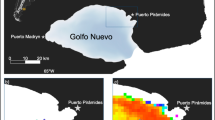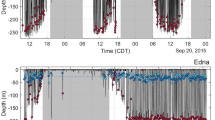Abstract
MR. R. W. GRAY's series of letters make interesting reading to one who has been associated with various attempts to enable men to dive a little deeper than usual. From what has been published, and from other documents Mr. Gray has kindly lent to me, the evidence that whales can dive to 500 fathoms and beyond seems good, while it is certain that, after being harpooned, they can remain submerged for 40 minutes, and much longer in the case of the bottlenosed whale. Since they can exist so long without taking breath at a time when they are exerting their utmost energies to escape, there need be little difficulty in accepting the view that when resting or sleeping (and consequently using oxygen at a slower rate) they can remain under the ice or on the sea bottom for some hours.
This is a preview of subscription content, access via your institution
Access options
Subscribe to this journal
Receive 51 print issues and online access
$199.00 per year
only $3.90 per issue
Buy this article
- Purchase on SpringerLink
- Instant access to full article PDF
Prices may be subject to local taxes which are calculated during checkout
Similar content being viewed by others
Rights and permissions
About this article
Cite this article
DAMANT, G. The Buoyancy of Whales. Nature 121, 829–830 (1928). https://doi.org/10.1038/121829b0
Issue date:
DOI: https://doi.org/10.1038/121829b0



